How to set an energy saving target at your school
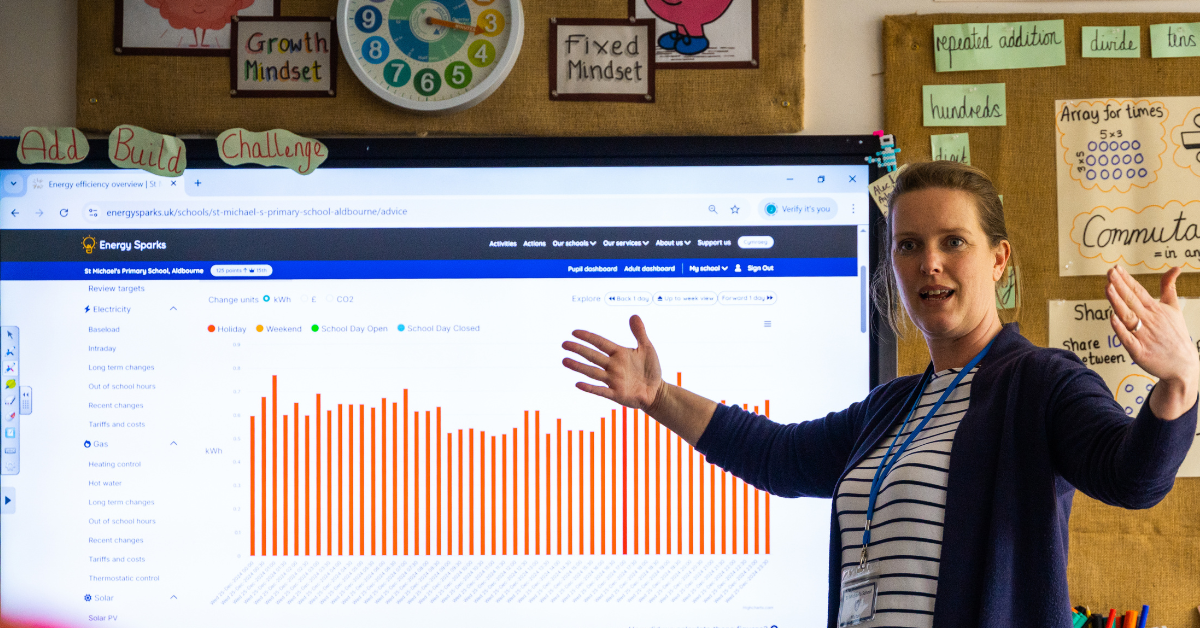
Setting energy saving targets for your school can be a great way to galvanise your team to take action, and to understand whether these actions are achieving meaningful impact. But how ambitious should you be? Here we offer some advice.
Note: For the purpose of this blog, we’re talking about a single year energy reduction target, but it’s likely that this will be part of a much bigger picture.
What is a reasonable energy saving target?
When setting a single-year target, remember it is usually part of a longer-term pathway. It can form a core, measurable part of a Climate Action Plan, or could be a necessary budgeting tool. So think about those longer term targets. To put it simply: Where do you want to be in 5-10 years’ time?
For simplicity, you could break a longer-term target down into equal parts. However, there are some things to consider here:
- If you are at the start of your energy saving journey, setting a larger target might feel daunting. But – perhaps counterintuitively – it is often possible to make your biggest savings at this time. Think “low hanging fruit”.
- Be ambitious, but not unrealistic. If a target is too high and unreachable people will lose hope or lose interest.
- From a climate change perspective, every tonne of CO2 you cut counts. Speed is also important – the faster you can make cuts the more carbon you save. Consider the charts below.
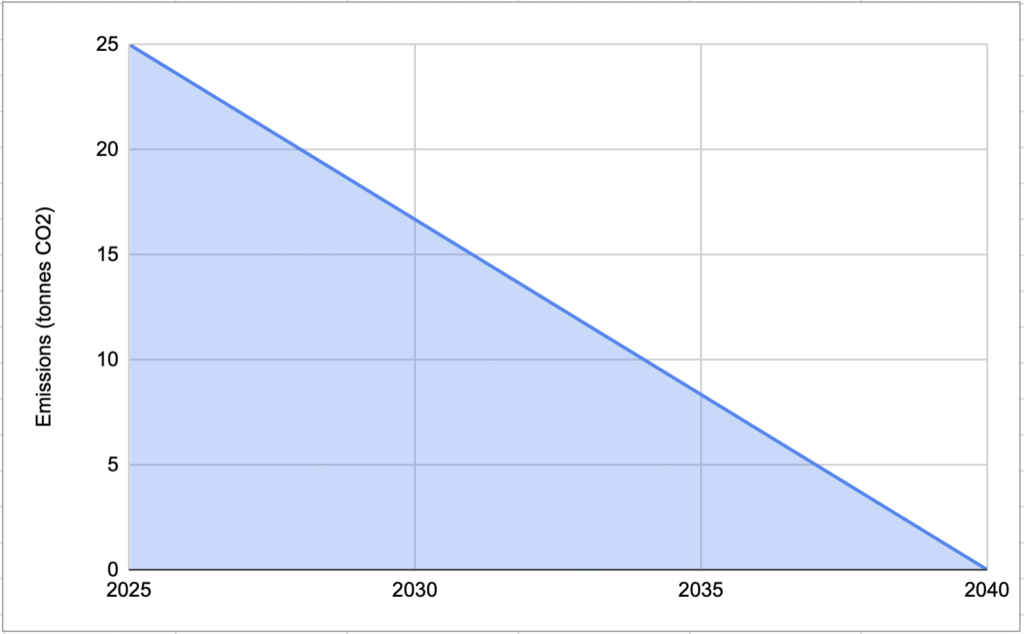
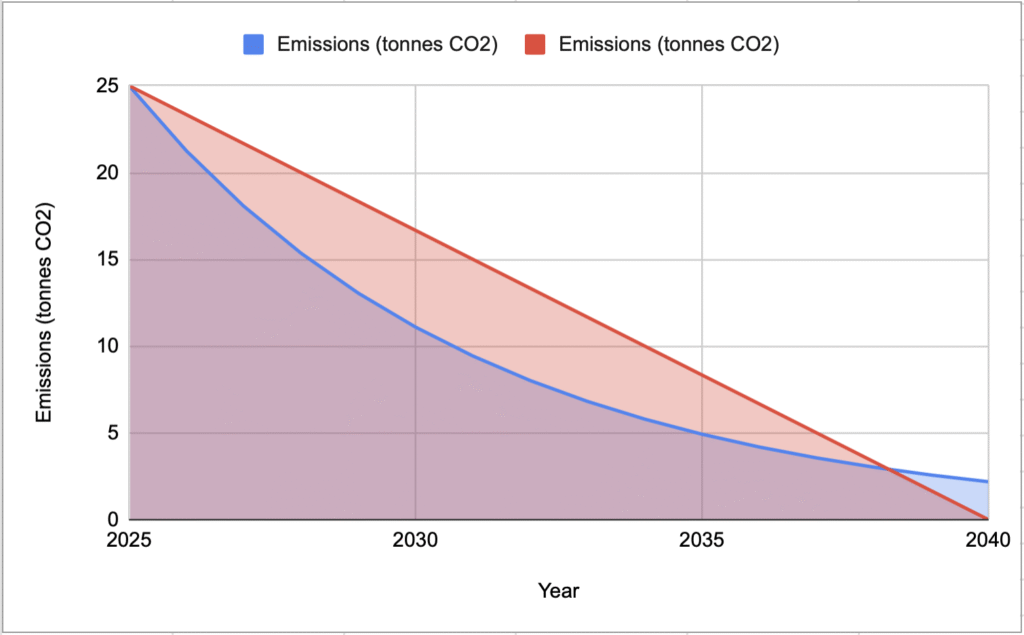
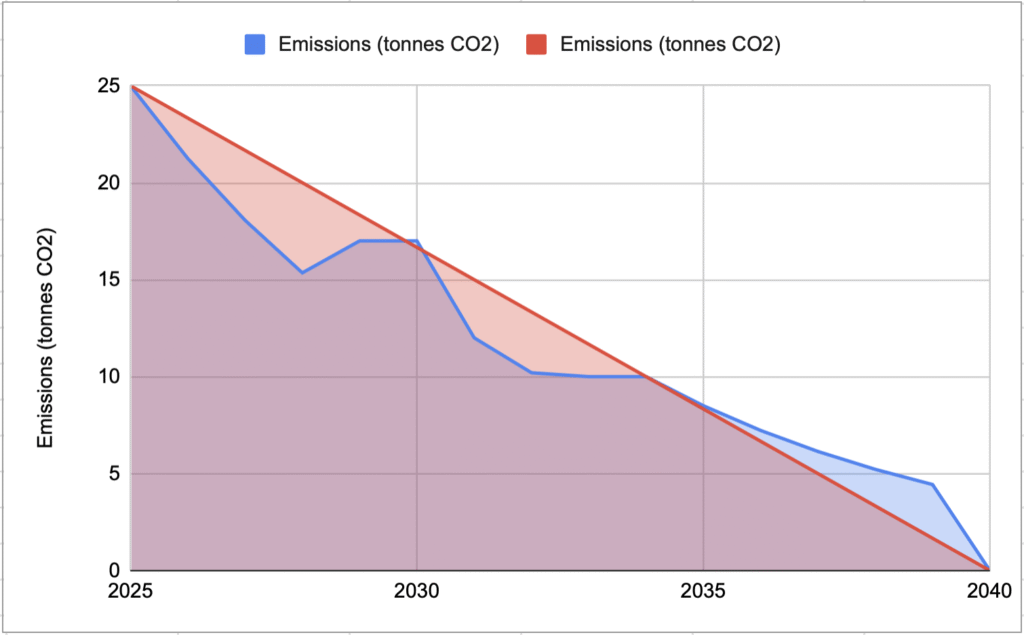
Chart 1: Saving the same amount of carbon dioxide each year feels achievable.
Chart 2: saving 15% each year will mean bigger savings over the whole period. In this example, although net zero isn’t reached by 2040, as in the previous chart, total emissions over that period (the blue shaded bit), are about 25% lower.
Chart 3: In reality, your energy / emissions saving journey will look more like this. There will be some years with steady savings, some where no savings are made, some where consumption jumps back up (due to a faulty boiler or some other emergency), then there will be some big drops due to capital investments or major behaviour change campaigns.
At Energy Sparks, we don’t want to overwhelm people with their targets. We suggest a default annual target of 10% for gas and 5% for electricity although we know many schools can and have achieved much higher savings. In the 2024/25 academic year, average savings made by Energy Sparks schools were 13% for gas and 7% for electricity.
Larger savings for gas can be made with relatively straightforward changes to boiler settings. Electricity can be more tricky as it involves more appliances, more people and more behaviour change.
Consider your Energy Sparks analysis
You might want to consider how your school compares to others – this can help you understand the kind of changes that might be possible and give you the confidence to be ambitious!
Use Energy Sparks comparisons to see if your school is ranked alongside our well-managed or top performing schools. If it is, it might be harder (but not impossible) to make changes.
Our advice pages look at your performance across a variety of energy saving topics, and show you how you compare to other similar schools.
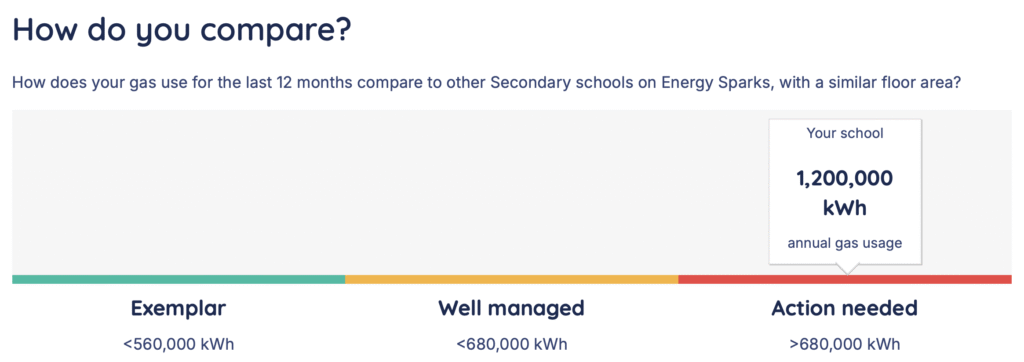
For example, if your school is using 20% of its gas during holidays you can meet your 10% target purely by halving your holiday usage. Our analysis may also show that you could reduce gas consumption by 10% by switching your heating on later. These pieces of analysis can help to reassure you that a target is achievable and can form useful indicators to know if you are on track.
How much does the age of my school matter?
It might feel like an old school can’t make changes because it’s draughty and the boiler is ancient, or a new school can’t make savings because it’s already super efficient.
But both of these types of schools are usually surprisingly capable of making savings. It’s more important to look at how your school compares to others or when it is using energy.
You might also want to consider investing some of the funds you have saved into building fabric changes or appliance upgrades.
How do we turn our target into a reality?
Energy Sparks offers a wide range of suggested pupil-led activities and staff actions to help you cut your energy use.
If your school is signed up with Energy Sparks, we will recommend which actions you should prioritise, based on your energy use data. For example, now might be a great time to focus on some behaviour change campaigns or to review your boiler settings against our guidance.
Find out more – watch a demo or join one of our training sessions (free to Energy Sparks users).
I’m ready to set a target
Great! You will see a prompt on your dashboard to set a target and also be invited to do so in your weekly alert emails. Once a target has been set, you will be able to monitor monthly progress against your target from your advice pages.
